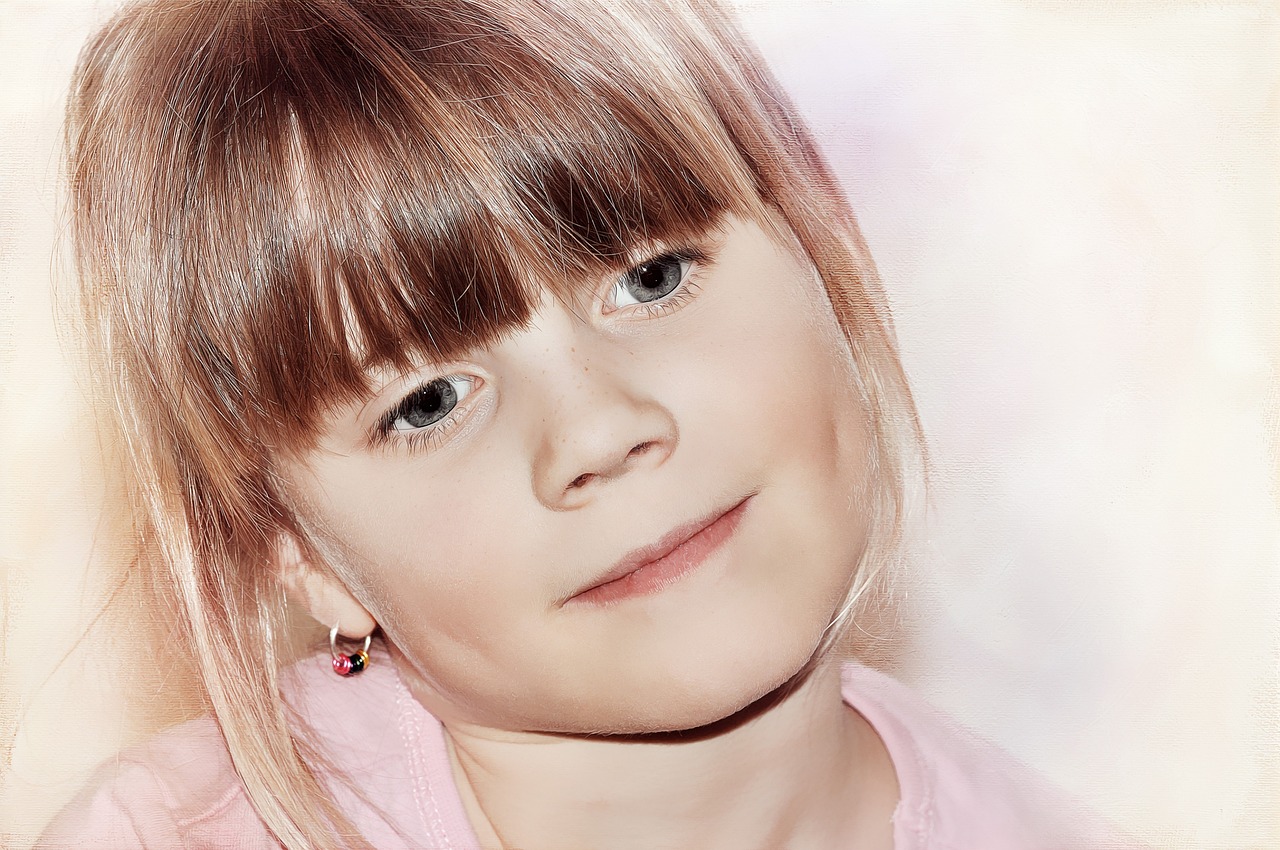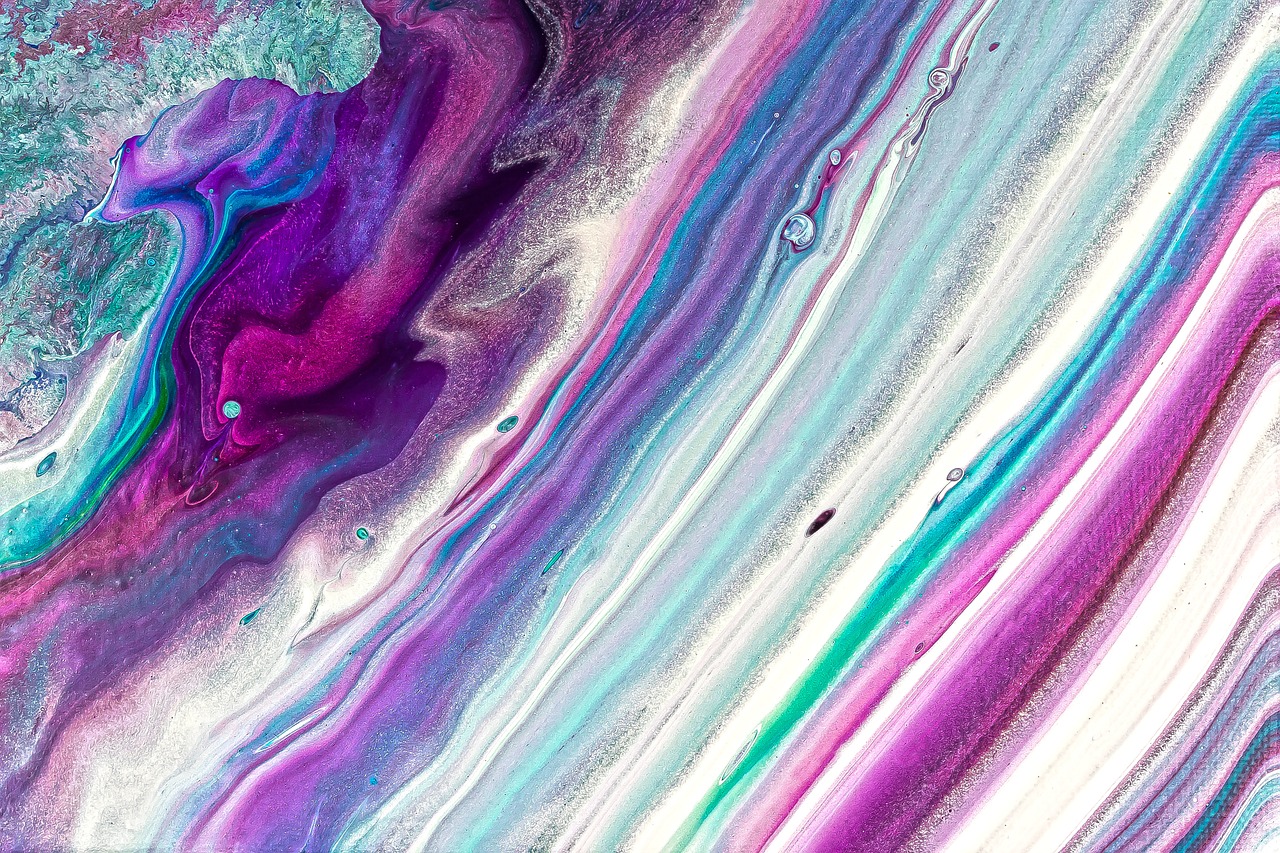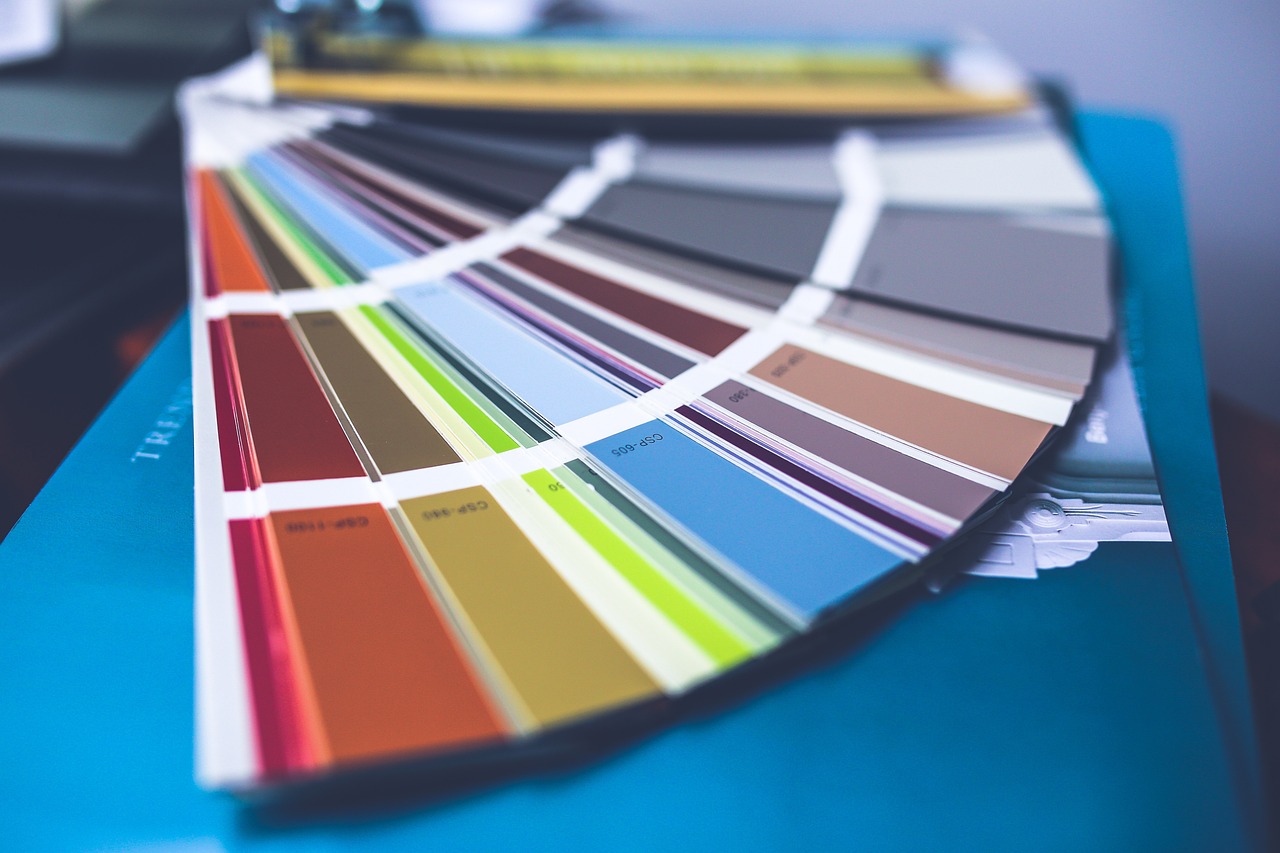Capturing Emotion in Portrait Painting
Portrait painting is more than just a visual representation of a person; it’s an emotional journey that connects the artist, the subject, and the viewer. When you look at a portrait, what do you feel? Is it joy, sadness, or perhaps nostalgia? This emotional response is precisely what skilled artists aim to capture. The essence of a portrait lies in its ability to convey feelings, and this is achieved through a combination of expression, color, and composition. Each element plays a crucial role in creating an impactful artwork that resonates deeply with its audience.
To truly understand how to capture emotion in portrait painting, one must delve into the intricate techniques that artists employ. From the subtle nuances of a smile to the intense gaze of a subject, every detail matters. Artists often spend countless hours observing and studying their subjects, not just to replicate their physical features, but to understand the emotions that lie beneath the surface. This process is akin to peeling back layers of an onion, revealing the complex feelings that define a person.
In this article, we will explore the various techniques and elements involved in portraying emotions effectively in portrait painting. We will discuss how expression plays a fundamental role, the influence of color theory, the impact of lighting, and the importance of composition. By the end of our journey, you will not only appreciate the artistry behind portrait painting but also understand the profound emotional connections that these artworks can evoke.
Understanding facial expressions is crucial in portrait painting. Artists must study how emotions manifest physically to convey feelings authentically, allowing viewers to connect with the subject on a deeper level. A slight furrow of the brow, a twinkle in the eye, or the curvature of a smile can all tell a story. These expressions serve as the language of emotions, and an artist's ability to translate this language onto canvas is what makes their work resonate.
Moreover, different cultures and backgrounds can influence how expressions are interpreted. For instance, a smile in one culture might convey happiness, while in another, it could signify nervousness. Thus, artists must be aware of these nuances to portray emotions accurately. This understanding is akin to being a translator of feelings, where every brushstroke is a word that contributes to the overall narrative.
Colors evoke specific emotions and can dramatically influence the mood of a portrait. Artists use color palettes strategically to enhance feelings and create a particular atmosphere within their work. For example, warm colors like reds and yellows often convey energy and passion, while cool colors such as blues and greens evoke calmness and serenity. This choice of colors is not just a matter of aesthetics; it’s a deliberate decision that shapes the emotional tone of the portrait.
When artists choose between warm and cool colors, they are essentially deciding on the emotional narrative they wish to convey. Warm colors can create a sense of urgency and excitement, while cool colors can provide a tranquil and soothing effect. This decision can be likened to setting the stage for a play; the colors set the mood and prepare the audience for what is to come.
Certain colors carry symbolic meanings that can enhance the narrative of a portrait. For instance, red is often associated with love and passion, while black can symbolize mourning or sophistication. Understanding these associations helps artists communicate complex emotions through their choice of hues. It's like having a secret code that only those who understand the language of color can decipher.
The intensity and brightness of colors can affect the emotional impact of a portrait. Subtle variations can either draw attention to or soften the emotional expression being portrayed. For example, a vibrant red can evoke strong feelings, while a muted shade might suggest introspection or melancholy. This careful manipulation of color saturation is akin to a musician adjusting the volume of their instrument to create the perfect harmony.
Lighting plays a pivotal role in creating mood and highlighting emotions in portrait painting. Artists manipulate light to emphasize features and evoke specific feelings in their subjects. The way light interacts with the subject can create dramatic shadows or gentle highlights, both of which can profoundly affect the viewer's perception. It’s as if the artist is a magician, using light as their wand to conjure emotions from the canvas.
The arrangement of elements within a portrait influences how emotions are perceived. Thoughtful composition guides the viewer's eye and enhances the emotional narrative conveyed by the subject. A well-composed portrait can draw the viewer in, making them feel as if they are part of the scene, while a poorly arranged one might leave them feeling disconnected.
Using leading lines can direct attention to the subject's face, enhancing the emotional connection. Artists often employ this technique to ensure that the viewer engages with the intended feelings portrayed. Just like a storyteller uses a compelling narrative to keep the audience engaged, artists utilize composition to guide the viewer’s emotional journey.
Negative space can create a sense of isolation or intimacy in a portrait. By manipulating the surrounding space, artists can amplify the emotions expressed by the subject, making the viewer feel more connected. It’s a powerful reminder that sometimes, what is not said or shown can speak volumes.
- What is the most important element in capturing emotion in portrait painting? While all elements are important, expression is often considered the most critical as it conveys the subject's feelings directly.
- How does color influence emotions in art? Different colors evoke different emotions; warm colors can energize, while cool colors can calm. Artists choose their palettes to reflect the mood they want to convey.
- Why is lighting important in portrait painting? Lighting helps highlight features and create mood, significantly impacting how emotions are perceived in the artwork.
- What role does composition play in emotional expression? Composition guides the viewer's eye and can enhance or detract from the emotional narrative of the portrait.

The Role of Expression
This article explores the techniques and elements involved in portraying emotions effectively in portrait painting, highlighting the importance of expression, color, and composition in creating impactful artworks.
Understanding facial expressions is crucial in portrait painting. Imagine walking into a gallery and being instantly drawn to a painting that seems to speak to you. The secret lies in the emotions conveyed through the subject's face. Artists must delve deep into the nuances of how emotions manifest physically—think of the subtle curve of a smile or the slight furrow of brows. These details allow viewers to connect with the subject on a deeper level, almost as if they can feel what the subject is experiencing.
To master this art, an artist should consider various aspects of expression. Here are some key points to keep in mind:
- Study Human Emotions: A profound understanding of human emotions is essential. Artists often observe real-life interactions, capturing fleeting moments that reveal genuine feelings.
- Practice Drawing Expressions: Regular practice in sketching different facial expressions can help artists become adept at translating emotions onto canvas.
- Use Reference Images: Utilizing photographs or live models can provide invaluable insights into how different emotions are expressed.
Furthermore, the power of expression in portrait painting is not just about the face. The entire body plays a role in conveying feelings. For instance, crossed arms might suggest defensiveness, while an open posture can indicate openness and warmth. By observing and incorporating these subtle cues, artists can enhance the emotional depth of their portraits.
Moreover, the context in which a portrait is created can significantly influence its emotional expression. An artist might choose to depict a joyful moment during a celebration or capture the somber mood of a reflective moment. This decision impacts not only the expression on the subject's face but also the overall atmosphere of the painting.
In conclusion, mastering the role of expression in portrait painting is a multifaceted endeavor. It requires keen observation, continual practice, and an understanding of the emotional narratives that can be woven into a single image. When an artist successfully captures the essence of their subject's emotions, the result is a powerful connection that resonates with viewers, inviting them into the world of the painting.
Q1: Why is expression important in portrait painting?
A1: Expression is vital because it helps convey the subject's emotions, allowing viewers to connect on a deeper level with the artwork.
Q2: How can I improve my ability to capture expressions in my portraits?
A2: Practice observing real-life emotions, sketching various expressions, and using reference images to enhance your skills.
Q3: Do body language and posture affect emotional expression in portraits?
A3: Yes, body language and posture play a significant role in conveying emotions, complementing the facial expressions of the subject.

Color Theory in Emotion
Colors are not just mere visual elements; they are powerful tools that can evoke a spectrum of emotions and set the mood of a portrait. When an artist selects a color palette, they are not only choosing hues but are also crafting an emotional narrative that resonates with the viewer. Think of color as the emotional language of art—each shade speaks volumes about the feelings and thoughts of the subject being portrayed. For instance, the vibrant reds and oranges can ignite feelings of passion and excitement, while soft blues and greens may invoke tranquility and calmness. This emotional connection is vital in portrait painting, as it allows the audience to engage with the artwork on a personal level.
Artists often consider the psychological implications of colors when creating their works. It's fascinating how certain colors can trigger specific emotional responses in people. For example, warm colors like red, yellow, and orange can create feelings of warmth and comfort, or they can signal danger and urgency. In contrast, cool colors such as blue and green tend to evoke feelings of peace and serenity. This understanding of color psychology is essential for artists who want to convey a particular mood or emotion in their portraits.
When it comes to choosing between warm and cool colors, artists must reflect on the emotional tone they wish to convey. Warm colors are often associated with energy, enthusiasm, and passion. They can make a portrait feel alive and dynamic, drawing the viewer in with a sense of vibrancy. On the other hand, cool colors can provide a sense of calmness and stability, creating a soothing atmosphere that invites introspection. The choice between these color schemes can significantly influence how the viewer interprets the emotions of the subject.
Beyond the basic emotional responses, colors can also carry symbolic meanings that add depth to a portrait. For instance, red is often associated with love and courage, while black can symbolize mourning or elegance. Understanding these associations allows artists to communicate complex emotions through their choice of hues. For example, a portrait that features a subject wearing a deep blue dress might suggest feelings of sadness or contemplation, while a bright yellow backdrop could symbolize hope and happiness. By weaving these symbolic colors into their work, artists can create a richer emotional tapestry that resonates with the viewer.
The intensity and brightness of colors play a crucial role in the emotional impact of a portrait. A highly saturated color can draw attention and evoke strong feelings, while muted tones can create a more subdued emotional atmosphere. For instance, a portrait with vivid, bright colors might feel energetic and full of life, while one with softer, pastel colors might evoke a sense of nostalgia or calm. Subtle variations in color saturation can either highlight or soften the emotional expressions being portrayed, allowing artists to refine their message and enhance the viewer's experience.
Lighting is another essential aspect of color theory in portrait painting. The way light interacts with colors can dramatically alter the mood of the artwork. Artists often use lighting to highlight certain features or emotions, guiding the viewer’s eye to the focal points of the portrait. For instance, a well-lit face can convey confidence and joy, while shadows can create a sense of mystery or sadness. By manipulating light and shadow, artists can enhance the emotional narrative of their work, making it even more impactful.
In conclusion, understanding color theory is fundamental for artists aiming to capture emotion in portrait painting. By thoughtfully selecting colors, considering their psychological implications, and manipulating lighting, artists can create portraits that not only depict a subject’s likeness but also evoke powerful feelings and connections with the viewer. The interplay of color and emotion is a dance that, when mastered, can elevate a simple portrait into a profound work of art.
- What is color theory in art? Color theory refers to the principles and guidelines that artists use to understand how colors interact and the emotional responses they evoke.
- How do colors affect emotions? Different colors can trigger specific emotional responses; for instance, warm colors can evoke energy and passion, while cool colors can create feelings of calmness.
- Why is lighting important in portrait painting? Lighting helps to highlight features and emotions, influencing how the viewer perceives the subject and the overall mood of the portrait.
- Can symbolic colors change the meaning of a portrait? Yes, symbolic colors can add layers of meaning, allowing artists to communicate complex emotions and narratives through their choice of hues.

Warm vs. Cool Colors
When it comes to portrait painting, the choice between warm and cool colors is not merely an artistic decision; it’s a powerful tool that can shape the emotional landscape of the artwork. Warm colors, such as reds, oranges, and yellows, tend to evoke feelings of energy, passion, and warmth. Imagine the vibrant hues of a sunset; they invite a sense of comfort and excitement, drawing viewers in with their inviting glow. On the other hand, cool colors like blues, greens, and purples create a sense of calmness and serenity. Think of a tranquil lake under a clear blue sky; these colors can evoke feelings of peace and introspection.
Artists often find themselves at a crossroads when deciding which palette to use, as the emotional tone of their subject can profoundly influence the viewer's perception. For instance, a portrait painted with warm colors might convey a lively personality, suggesting that the subject is vivacious and full of life. Conversely, a cool color palette could suggest a more contemplative character, perhaps someone who is introspective or melancholic. The choice of colors can act as a silent dialogue between the artist and the audience, allowing for a deeper connection to the subject's emotional state.
Moreover, artists can also blend both warm and cool colors to create a dynamic contrast that enhances the emotional depth of the portrait. This technique not only adds visual interest but also highlights specific features or emotions. For example, using warm colors on the subject's face while employing cool tones in the background can create an effect that draws the viewer's attention directly to the subject's expression, heightening the emotional impact. It's like spotlighting the protagonist in a play while keeping the supporting cast in soft focus.
To help illustrate the emotional effects of warm and cool colors, consider the following table that summarizes their typical associations:
| Color Type | Colors | Emotional Associations |
|---|---|---|
| Warm Colors | Red, Orange, Yellow | Energy, Passion, Warmth |
| Cool Colors | Blue, Green, Purple | Calmness, Serenity, Introspection |
In conclusion, the decision to use warm or cool colors in portrait painting is a significant one that can dramatically alter the emotional narrative of the artwork. Artists must carefully consider the feelings they wish to evoke and choose their color palettes accordingly. By understanding the psychological effects of color, they can create portraits that resonate deeply with viewers, making them feel as if they are experiencing the emotions of the subject firsthand.
- What are warm colors? Warm colors include reds, oranges, and yellows, often associated with energy and passion.
- What are cool colors? Cool colors include blues, greens, and purples, typically evoking calmness and serenity.
- How do colors affect the emotional impact of a portrait? The choice of colors can enhance or soften the emotional expression, guiding the viewer's perception of the subject.
- Can artists combine warm and cool colors? Yes, blending warm and cool colors can create dynamic contrasts that enhance emotional depth.

Symbolic Colors
When it comes to portrait painting, colors are not just mere visual elements; they are powerful conveyors of meaning and emotion. Each color carries its own symbolic significance, and understanding these associations can greatly enhance the narrative of a portrait. For instance, red often symbolizes passion and intensity, while blue is frequently associated with calmness and serenity. By selecting colors that resonate with the emotions they wish to portray, artists can create a deeper connection between the viewer and the subject.
Consider the following common symbolic associations:
| Color | Symbolic Meaning |
|---|---|
| Red | Passion, Love, Anger |
| Blue | Calm, Trust, Sadness |
| Yellow | Happiness, Energy, Caution |
| Green | Growth, Harmony, Envy |
| Purple | Royalty, Mystery, Spirituality |
| Black | Elegance, Death, Power |
| White | Purity, Innocence, Simplicity |
Using these colors strategically allows artists to communicate complex emotions without uttering a single word. For example, a portrait painted with a predominance of warm colors can evoke feelings of warmth and intimacy, making the viewer feel a connection to the subject. Conversely, a cooler palette can create a sense of distance or introspection, prompting the viewer to reflect on the deeper emotional currents at play.
Moreover, symbolic colors can also be utilized to tell a story. An artist might choose to adorn a subject in a vibrant red dress to signify their fiery spirit or use muted tones to reflect a period of grief. The interplay between color and emotion is a dance that artists must master to create portraits that resonate deeply with their audience.
In summary, understanding the symbolic meanings of colors is essential for any portrait artist aiming to evoke emotions effectively. By thoughtfully selecting hues that align with the feelings they wish to convey, artists can transform a simple painting into a compelling narrative that speaks to the viewer on multiple levels.
- What are symbolic colors in portrait painting? Symbolic colors are hues that carry specific meanings and emotions, influencing how a portrait is perceived.
- How can I choose colors for my portrait? Consider the emotions you want to convey and choose colors that align with those feelings.
- Do colors affect the viewer's emotions? Yes, different colors can evoke various emotional responses, making color choice crucial in portrait painting.

Color Saturation and Brightness
When it comes to portrait painting, color saturation and brightness are not just technical terms; they are the heartbeat of emotional expression. Imagine standing in front of a vibrant sunset, where the deep oranges and reds pull at your heartstrings. That’s the power of saturation! In the world of art, saturation refers to the intensity of a color. A highly saturated color is bold and striking, while a less saturated color appears more muted and subdued. This difference can significantly alter the viewer's emotional response to a portrait.
For instance, think about a portrait painted with rich, saturated reds and yellows. These colors can evoke feelings of passion, warmth, and energy, almost like a fiery embrace. On the other hand, if an artist chooses softer, less saturated hues, such as pastel pinks or light blues, the portrait may convey calmness, nostalgia, or even melancholy. This is why understanding the role of saturation is essential for artists who wish to communicate complex emotions effectively.
Brightness, on the other hand, refers to how light or dark a color appears. A bright color can draw attention and create a sense of vibrancy, while darker shades can evoke feelings of seriousness or introspection. The interplay between saturation and brightness can lead to powerful emotional narratives within a portrait. For example, a portrait that uses bright, saturated colors in the foreground, combined with darker, muted tones in the background, can create a striking contrast that emphasizes the subject's emotional state.
To illustrate the relationship between saturation, brightness, and emotion, consider the following table:
| Saturation Level | Brightness Level | Emotional Impact |
|---|---|---|
| High Saturation | Bright | Energetic, Passionate |
| High Saturation | Dark | Intense, Dramatic |
| Low Saturation | Bright | Soft, Gentle |
| Low Saturation | Dark | Somber, Reflective |
In conclusion, the careful manipulation of color saturation and brightness allows artists to mold the emotional landscape of their portraits. By choosing the right combination of these elements, an artist can create a visual experience that resonates deeply with the viewer, inviting them to explore the emotions captured within the canvas. So, next time you marvel at a portrait, take a moment to consider how saturation and brightness are working together to tell a story.
- What is the difference between saturation and brightness? Saturation refers to the intensity of a color, while brightness indicates how light or dark a color appears.
- How can I use color saturation in my own paintings? Experiment with mixing colors to create varying levels of saturation, and observe how they change the mood of your artwork.
- Why is understanding color important in portrait painting? Color plays a crucial role in conveying emotions and can significantly influence how viewers perceive the subject.

Lighting Techniques
This article explores the techniques and elements involved in portraying emotions effectively in portrait painting, highlighting the importance of expression, color, and composition in creating impactful artworks.
Understanding facial expressions is crucial in portrait painting. Artists must study how emotions manifest physically to convey feelings authentically, allowing viewers to connect with the subject on a deeper level.
Colors evoke specific emotions and can dramatically influence the mood of a portrait. Artists use color palettes strategically to enhance feelings and create a particular atmosphere within their work.
Warm colors often convey energy and passion, while cool colors can evoke calmness and serenity. Artists must choose their color schemes carefully to reflect the intended emotional tone of the portrait.
Certain colors carry symbolic meanings that can enhance the narrative of a portrait. Understanding these associations helps artists communicate complex emotions through their choice of hues.
The intensity and brightness of colors can affect the emotional impact of a portrait. Subtle variations can either draw attention to or soften the emotional expression being portrayed.
Lighting plays a pivotal role in creating mood and highlighting emotions in portrait painting. The way light interacts with the subject can dramatically alter the viewer's perception and emotional response. For instance, dramatic lighting can create a sense of tension or excitement, while soft, diffused light can evoke feelings of tranquility and warmth.
Artists often manipulate light to emphasize certain features of the subject's face, guiding the viewer's eye to the most expressive parts. For example, a well-placed highlight on the cheek can signify joy or vitality, while shadows under the eyes might suggest sadness or contemplation. Understanding how to balance these elements is essential for creating a compelling portrait.
Moreover, the direction of light can change the entire emotional landscape of a painting. Front lighting can flatten features and create a more straightforward emotional expression, while side lighting introduces depth and complexity, allowing for more nuanced emotional interpretations. Here’s a quick overview:
| Lighting Type | Emotional Impact |
|---|---|
| Front Lighting | Flattens features, creates straightforward emotions |
| Side Lighting | Adds depth, enhances emotional complexity |
| Back Lighting | Creates silhouettes, evokes mystery or drama |
| Top Lighting | Can create a dramatic effect or enhance features |
In addition to direction, the quality of light—whether it’s harsh, soft, warm, or cool—also significantly affects the emotional tone of a portrait. Harsh light can create strong contrasts and evoke feelings of tension, while softer light tends to create a more intimate and inviting atmosphere. Ultimately, mastering lighting techniques allows artists to not only depict a subject's likeness but also to convey the emotional essence of the moment captured on canvas.
The arrangement of elements within a portrait influences how emotions are perceived. Thoughtful composition guides the viewer's eye and enhances the emotional narrative conveyed by the subject.
Using leading lines can direct attention to the subject's face, enhancing the emotional connection. Artists often employ this technique to ensure that the viewer engages with the intended feelings portrayed.
Negative space can create a sense of isolation or intimacy in a portrait. By manipulating the surrounding space, artists can amplify the emotions expressed by the subject, making the viewer feel more connected.
- What is the importance of lighting in portrait painting?
Lighting is crucial as it affects the mood, depth, and emotional impact of the portrait. Different lighting techniques can evoke various feelings in the viewer. - How do colors influence emotions in portrait painting?
Colors carry emotional weight; warm colors can evoke energy while cool colors can bring about calmness. The choice of color palette significantly impacts the portrait's overall mood. - What role does expression play in portrait painting?
Facial expressions are key to conveying emotions. Artists must study these expressions to authentically represent the subject's feelings.

Composition and Framing
When it comes to portrait painting, composition and framing are like the backbone of a great story. Just as a well-structured narrative keeps readers engaged, a thoughtfully arranged portrait captures the viewer's attention and evokes emotions. The way elements are arranged within the canvas can significantly influence how feelings are perceived, making the subject's emotions resonate with the audience on a profound level.
Imagine walking into a gallery and being drawn to a painting. What is it that catches your eye? Often, it’s the way the artist has arranged the subject, the background, and even the empty space surrounding them. This is where composition comes into play. A well-composed portrait not only highlights the subject's features but also tells a story. It guides the viewer's eye, allowing them to explore the emotional depth of the painting.
One of the key techniques in composition is the use of leading lines. These are lines within the artwork that naturally draw the viewer's gaze towards the subject’s face. Think of it like a road leading to a beautiful destination; the journey is just as important as the final stop. By employing leading lines, artists can enhance the emotional connection between the viewer and the subject. For example, a diagonal line may suggest movement or tension, while horizontal lines can evoke calmness and stability.
Another important aspect is the use of negative space. This refers to the area around and between the subject and other elements in the painting. Negative space can create feelings of isolation or intimacy, depending on how it is utilized. For instance, a subject placed centrally with ample negative space around them might evoke a sense of loneliness or contemplation, while a tighter composition can create an intimate connection. The balance of negative space can either amplify or soften the emotions being portrayed, adding another layer of complexity to the artwork.
To illustrate the importance of composition and framing, consider the following table:
| Technique | Effect on Emotion |
|---|---|
| Leading Lines | Directs focus to the subject, enhancing emotional engagement |
| Negative Space | Creates feelings of isolation or intimacy |
| Symmetry vs. Asymmetry | Symmetry can evoke balance; asymmetry can create tension |
| Framing Elements | Guides the viewer's eye and emphasizes the subject |
Ultimately, the art of composition and framing in portrait painting is about creating a visual narrative that resonates with the viewer. It’s about capturing a moment, a feeling, and an essence that speaks to the human experience. When artists pay attention to these elements, they unlock the potential for their portraits to not just depict a face, but to tell a story that lingers long after the viewer has walked away.
- What is the importance of composition in portrait painting?
Composition helps in guiding the viewer's eye and enhances the emotional narrative of the portrait. - How does negative space influence emotions in a portrait?
Negative space can create feelings of isolation or intimacy, amplifying the emotions expressed by the subject. - What are leading lines and how do they affect a portrait?
Leading lines direct attention to the subject's face, enhancing the emotional connection between the viewer and the artwork. - Can color choices impact the composition of a portrait?
Absolutely! Colors can influence the mood and emotional tone, complementing the overall composition.

Leading Lines and Focus
This article explores the techniques and elements involved in portraying emotions effectively in portrait painting, highlighting the importance of expression, color, and composition in creating impactful artworks.
Understanding facial expressions is crucial in portrait painting. Artists must study how emotions manifest physically to convey feelings authentically, allowing viewers to connect with the subject on a deeper level.
Colors evoke specific emotions and can dramatically influence the mood of a portrait. Artists use color palettes strategically to enhance feelings and create a particular atmosphere within their work.
Warm colors often convey energy and passion, while cool colors can evoke calmness and serenity. Artists must choose their color schemes carefully to reflect the intended emotional tone of the portrait.
Certain colors carry symbolic meanings that can enhance the narrative of a portrait. Understanding these associations helps artists communicate complex emotions through their choice of hues.
The intensity and brightness of colors can affect the emotional impact of a portrait. Subtle variations can either draw attention to or soften the emotional expression being portrayed.
Lighting plays a pivotal role in creating mood and highlighting emotions in portrait painting. Artists manipulate light to emphasize features and evoke specific feelings in their subjects.
The arrangement of elements within a portrait influences how emotions are perceived. Thoughtful composition guides the viewer's eye and enhances the emotional narrative conveyed by the subject.
Leading lines are an essential tool in the artist's toolkit, acting as invisible pathways that draw the viewer's gaze directly to the subject's face. Think of it this way: just like a well-designed road guides you effortlessly to your destination, leading lines in a portrait help guide the audience's attention towards the emotional core of the painting. This technique not only enhances the visual appeal but also deepens the emotional connection between the viewer and the subject.
By employing leading lines, artists can create a sense of focus that emphasizes the subject's expressions and emotions. For instance, consider how the direction of a subject's gaze or the arrangement of elements within the frame can create lines that lead the eye. These lines might be literal, like the edges of a table that point towards the subject, or more abstract, such as the way light falls across the canvas. Regardless of the method, the goal remains the same: to ensure that the viewer's attention is captured and held by the emotional narrative being portrayed.
Moreover, leading lines can also serve to establish context within the portrait. They can provide clues about the subject's environment or emotional state. For example, a line created by a shadow might suggest a feeling of isolation, while a bright, open space can evoke warmth and intimacy. Thus, the thoughtful arrangement of lines not only enhances focus but also enriches the storytelling aspect of the artwork.
In conclusion, mastering the use of leading lines is about more than just aesthetics; it’s about creating a bridge between the viewer and the subject’s emotions. When executed effectively, these lines can transform a simple portrait into a profound emotional experience, inviting the audience to explore the depths of the subject’s feelings.
- What are leading lines in portrait painting? Leading lines are compositional elements that guide the viewer’s eye towards the focal point of the artwork, often enhancing emotional engagement.
- How do colors affect emotions in portrait painting? Different colors can evoke various emotions; for example, warm colors can express passion, while cool colors can convey calmness.
- Why is facial expression important in portrait painting? Facial expressions are crucial as they provide insight into the subject's emotions, allowing viewers to connect on a deeper level.
- Can lighting influence the emotional tone of a portrait? Yes, lighting can dramatically alter the mood of a portrait, highlighting features and affecting the overall emotional impact.

Negative Space
The concept of in portrait painting is often overlooked, yet it plays a crucial role in shaping the emotional landscape of an artwork. Negative space refers to the area surrounding the main subject, and its manipulation can significantly influence how the viewer perceives the emotions conveyed in the portrait. Think of it as the silent partner in a conversation; while the main subject might be speaking loudly through their expressions, the negative space whispers the subtleties that enhance the overall message. By controlling this space, artists can create a sense of isolation, intimacy, or even tension, depending on the emotional narrative they wish to portray.
For instance, when an artist chooses to leave a large area of negative space around a subject, it can evoke feelings of loneliness or contemplation. This technique draws the viewer's eye directly to the subject, making their emotions stand out starkly against the emptiness surrounding them. On the flip side, a more balanced approach to negative space can foster a sense of connection and warmth, as it invites the viewer into the scene rather than pushing them away. It's like setting the stage for a powerful performance; the backdrop can either enhance the drama or dilute the impact.
Moreover, the choice of negative space can also affect the viewer's emotional response. Consider the following examples:
| Negative Space Effect | Emotional Response |
|---|---|
| Large empty areas around the subject | Feelings of loneliness or introspection |
| Balanced negative space | Feelings of warmth and connection |
| Chaotic or cluttered negative space | Feelings of tension or confusion |
When artists use negative space effectively, they can guide the viewer's eye and emotions in a way that enhances the portrait's narrative. This is where the magic happens. The viewer is not just looking at a face; they are experiencing a story, a moment frozen in time. By paying close attention to how negative space interacts with the subject, artists can elevate their work from mere representation to a profound emotional experience.
In conclusion, negative space is not just the absence of something; it is a vital component of the emotional dialogue within a portrait. Artists who understand and utilize negative space can create works that resonate deeply with viewers, allowing them to feel the weight of the emotions being expressed. So, the next time you gaze at a portrait, take a moment to consider the negative space. What stories does it tell? What emotions does it evoke? The answers may surprise you.
- What is negative space in portrait painting? Negative space refers to the area surrounding the main subject in a painting, which can influence the emotional perception of the artwork.
- How does negative space affect emotions in a portrait? By manipulating negative space, artists can evoke feelings of isolation, intimacy, or tension, enhancing the emotional narrative of the portrait.
- Can negative space be used intentionally? Absolutely! Artists often use negative space intentionally to guide the viewer's eye and emotions, creating a more impactful experience.
Frequently Asked Questions
- What is the importance of facial expressions in portrait painting?
Facial expressions are crucial in portrait painting because they serve as the primary means of conveying emotions. Artists need to study how different emotions manifest physically in the face, allowing them to create a connection between the viewer and the subject. A well-captured expression can evoke empathy and understanding, making the artwork resonate on a deeper level.
- How do colors influence emotions in portrait paintings?
Colors play a significant role in evoking specific emotions and can dramatically alter the mood of a portrait. For instance, warm colors like reds and oranges can convey energy and passion, while cool colors like blues and greens often evoke calmness and serenity. By strategically choosing color palettes, artists can enhance feelings and create a desired atmosphere within their work.
- What is the difference between warm and cool colors?
Warm colors are those that typically evoke feelings of warmth, energy, and excitement, such as reds, yellows, and oranges. Cool colors, on the other hand, tend to create a sense of calm, tranquility, and serenity, including blues, greens, and purples. Understanding the emotional impact of these color groups is essential for artists aiming to convey specific feelings in their portraits.
- How does lighting affect the emotional tone of a portrait?
Lighting plays a pivotal role in setting the mood and highlighting emotions in portrait painting. By manipulating light, artists can emphasize certain features and evoke specific feelings. For example, soft, diffused lighting can create a gentle and intimate atmosphere, while harsh lighting can add drama and intensity to the subject's expression.
- What is the significance of composition in portrait painting?
The arrangement of elements within a portrait—known as composition—greatly influences how emotions are perceived by viewers. Thoughtful composition guides the viewer's eye and enhances the emotional narrative conveyed by the subject. Techniques like leading lines and the use of negative space can amplify the feelings expressed, making the artwork more impactful.
- Can you explain the concept of negative space in portrait painting?
Negative space refers to the area surrounding the subject in a portrait. It can create a sense of isolation or intimacy, depending on how it is used. By manipulating negative space, artists can amplify the emotions expressed by the subject, making the viewer feel more connected to the artwork. This technique can evoke a range of feelings, from loneliness to closeness.



















